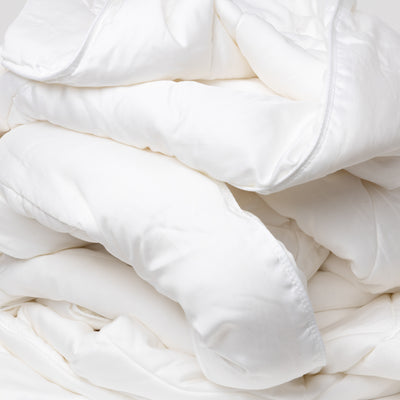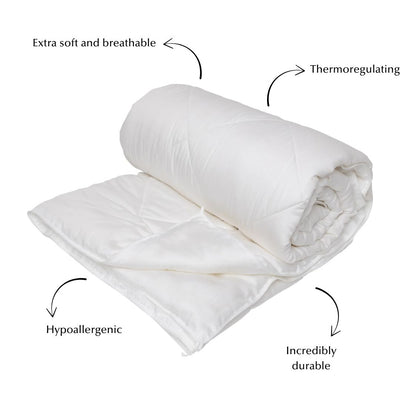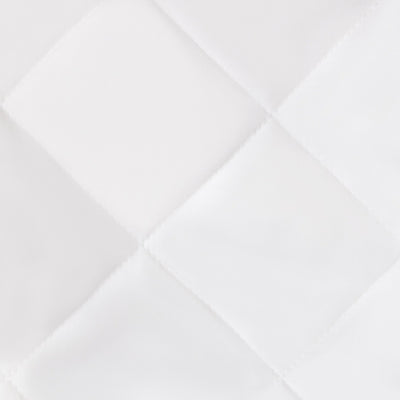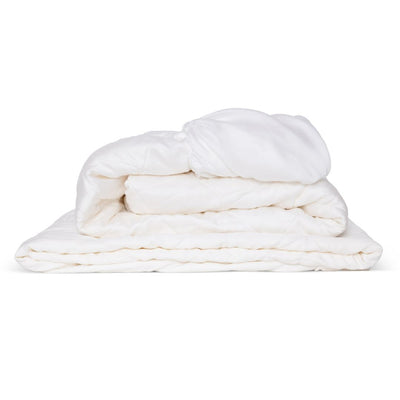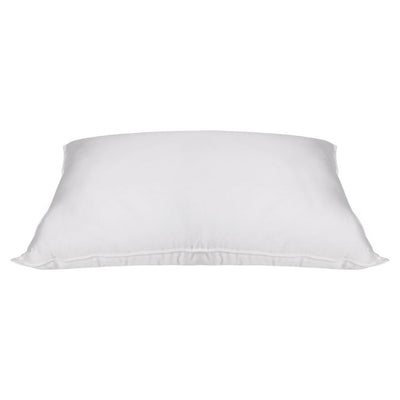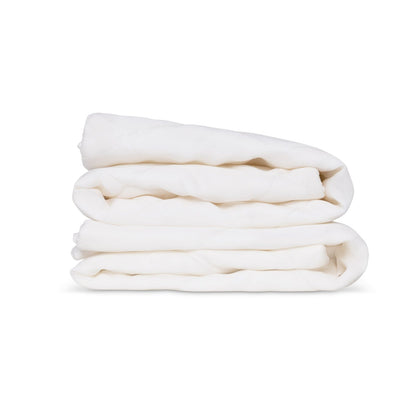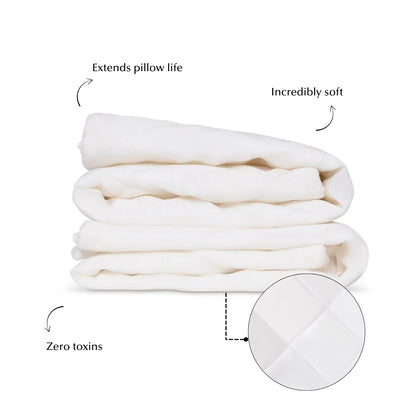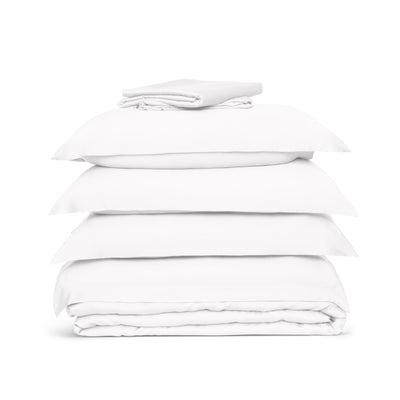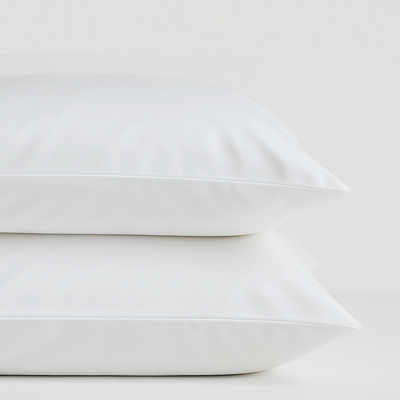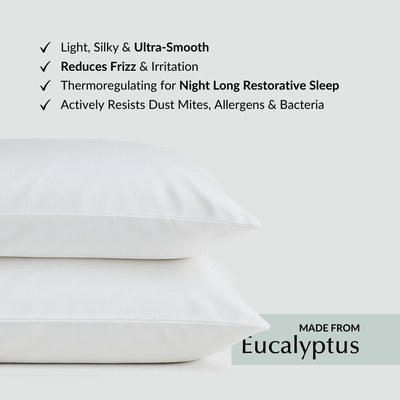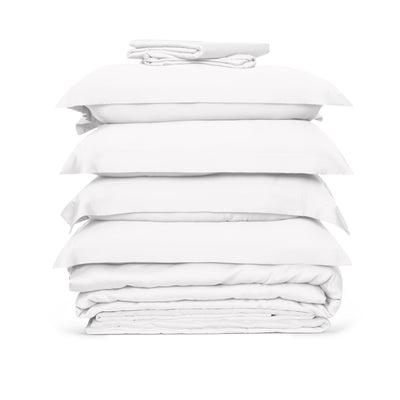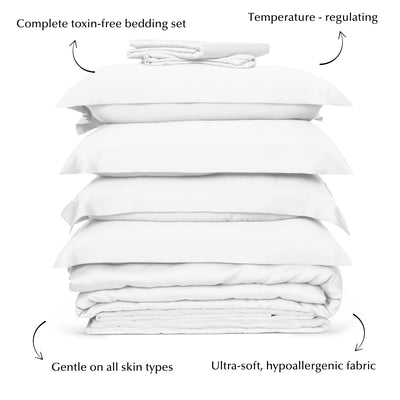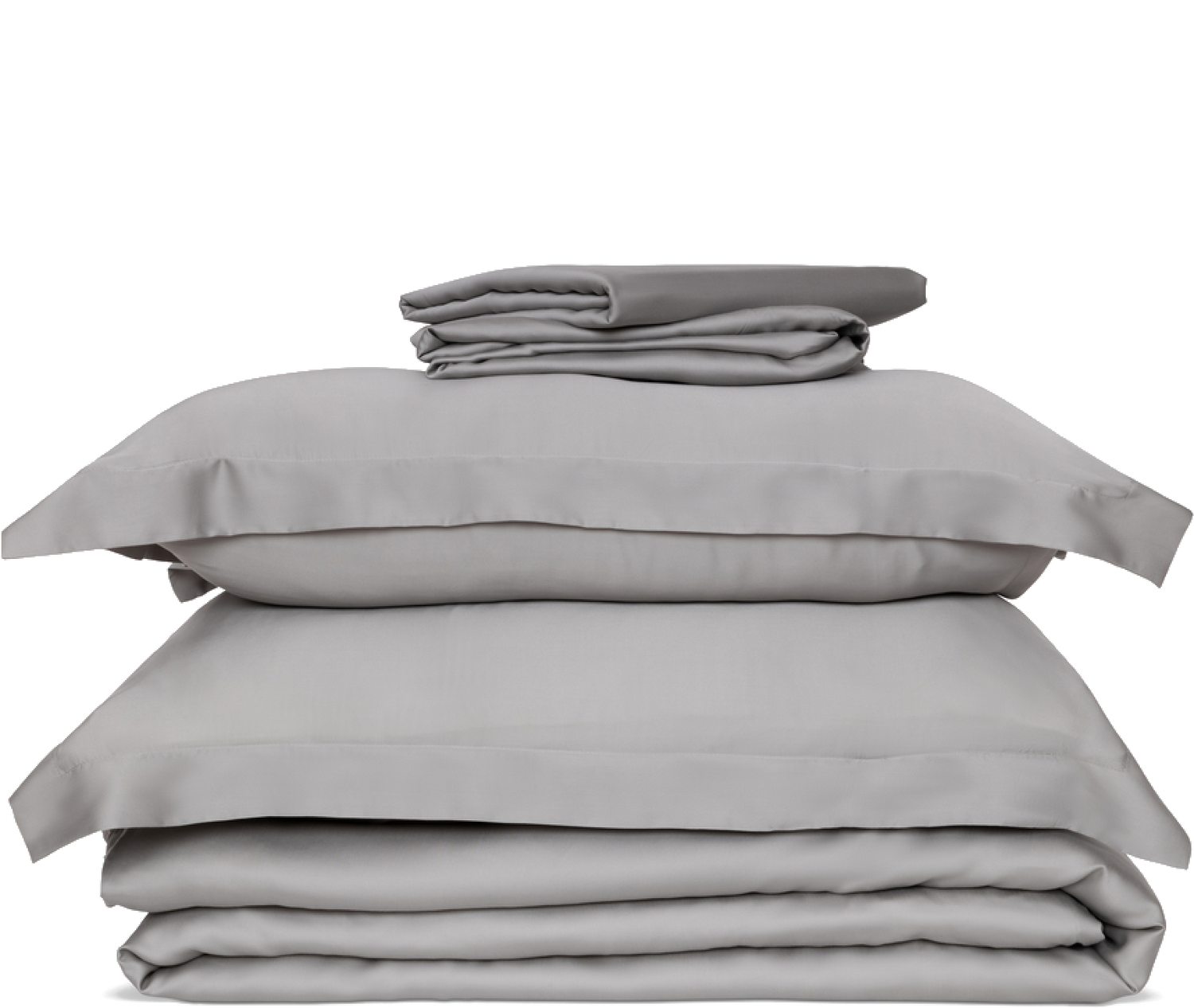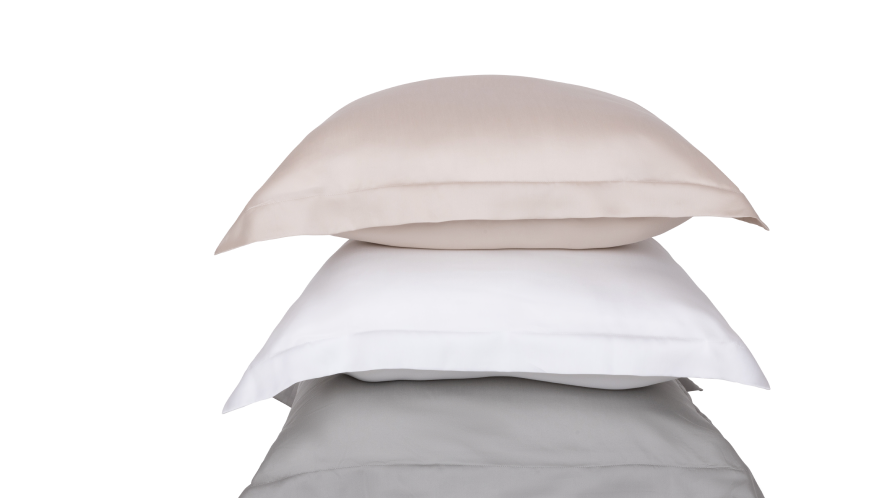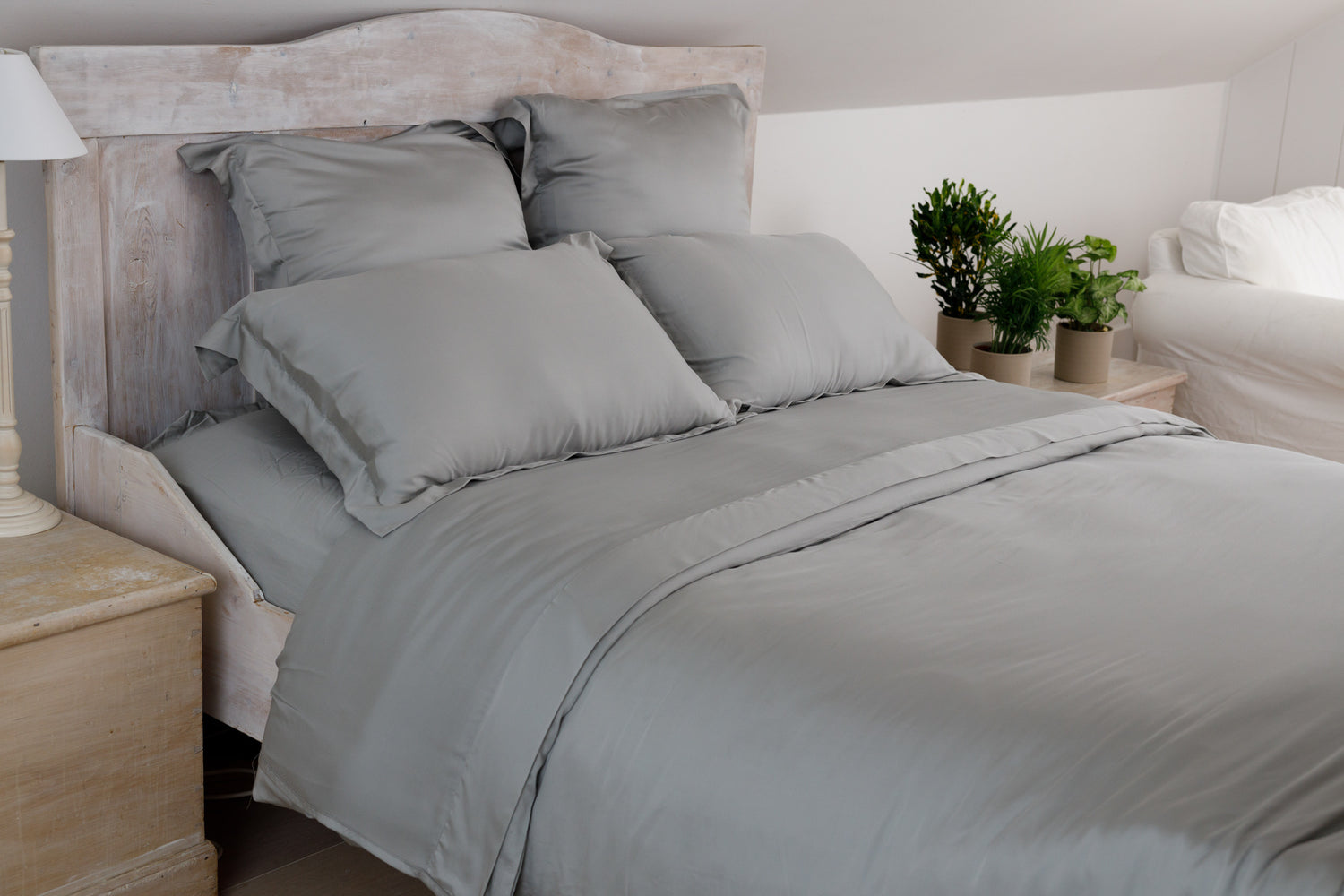We all know silk pillowcases are luxuriously comfortable and how they allow you to slowly sink into a cosy trance, but did you know they also offer several health and beauty benefits? Not only can you notice improved skin and appearance, but they can also help to keep hair from tangling as you sleep. So, it’s important to look after your silk pillowcases!
In this article, we’ve offered guidance and advice around how you can correctly launder your silk to maintain its sumptuous softness, as well as how to choose the right detergent and the best ways to dry and store your silken bedding.
An introduction to washing silk bedding
Cleaning silk bedding requires a little extra care to washing cotton or linen, because of its delicate nature and soft fibres. In this guide, we’ve explained in detail how to maintain its softness, whether machine washing or cleaning by hand, but the basics of looking after silk include:
- Ensure all silk is laundered separately to other types of bedding
- Use mesh bags when machine washing silk
- Never tumble dry your silk bedding
- Regularly change your silk bedding
Read on to find out how to choose the right cleaning product, step-by-step instructions for washing silk, and how to properly dry your bedding.
Choosing the right detergent
Whether hand washing your bedding or using a machine, it’s essential that you use a suitable silk detergent that’s neither too acidic nor too alkaline.
What to look out for when washing silk
Because silk is a soft, natural fibre, picking the wrong type of detergent can cause the fibres in the fabric to harden, and you can also be left with potentially-uncomfortable residue. While it sounds quite particular, it’s well worth choosing the right detergent to keep your silk in great condition!
To maintain the integrity of the silk and ensure fibres remain soft for as long as possible, look out for mild, toxin-free soap with a neutral pH, similar to what you’d use to wash wool.
What to avoid when washing silk
Silk is delicate, so there are various products and harsh detergents you should avoid at all costs to keep your bedding as comfortable as possible:
- Chlorine bleach – bleaching your silk will dissolve the fibres and weaken your fabric. It’ll also cause permanent yellowing and colour loss.
- Fabric softener – because silk is naturally soft, fabric conditioner isn’t necessary when washing your bedding. In fact, it can even be detrimental, and leave behind residue.
- Optical brightener – optical brightener can help some fabrics to retain their colour and vibrancy, but, because silk is natural, it won’t have any affect and may even break down the fibres.
- Laundry additive – anything other than basic silk detergent can start to weaken the fibres in your fabric.
How to machine wash silk bedding
With it being such a delicate fabric, can you wash silk in the machine? The short answer is yes, but it’s important to follow our step-by-step instructions closely, to prevent your fabric from becoming damaged. You’ll need:
- Your neutral silk detergent of choice
- A mesh laundry bag
- A drying rack
Once you’ve got everything together, you’re ready to starting machine washing your silk pillowcases.
- Select an appropriate setting and temperature

If your washing machine has a silk option – perfect! Alternatively, if it doesn’t, select the option that gives you a delicate washing cycle, as this is the setting that best-replicates hand washing.
- Machine wash silk pillowcase
Before setting off your machine, make sure your silk pillowcases are secure in a mesh laundry bag. This keeps silk safe from the barrel and prevents tearing. You should also wash silk separately to cotton or towels.
When it comes to the actual cycle, make sure water temperature is cold (warm water can cause silk to shrink) and you have the lowest possible spin setting.
- Remove and dry your silk
Once washed, quickly remove your silk from the machine and air your pillowcases on a drying rack or laid out flat. It’s important to dry your silk promptly, because leaving it to soak for longer than half an hour can weaken the fibres.
How to hand wash silk bedding

Washing silk pillowcases by hand is your alternative option. For this, you’ll need:
- A sink or washing basin
- Your choice of neutral silk detergent
- A drying rack
Once you’ve readied your equipment, you can start to hand wash you’re silk pillowcases.
- Pre-treat any odours and prepare your detergent
If your silk pillowcases have developed a bit of an odour, don’t worry; this is natural! Simply soak the fabric in a bowl of lukewarm water with around a quarter of a cup of white vinegar. This will give your silk pillowcases a freshen up before washing properly.
- Hand wash silk pillowcase
Fill up your sink or wash basin with cool water and add the right amount of detergent according to the instructions on the bottle. Turn your silk pillowcases inside out and gently submerge them, using your hands to softly agitate the soapy water.
Because silk is a soft fabric, rough movement can start to weaken the fibres, so avoid rubbing your pillowcase too much. Additionally, silk can become weak when wet for too long, so, as a rule of thumb, don’t soak for longer than half an hour.
- Dry your silk
Once you’ve washed your silk pillowcases, give them a quick rinse under cold water until they’re no longer soapy. Importantly, avoid wringing your silk, and instead, gently push the bulk of the water out of the material by hand so as not to disrupt the fibres. Rather than tumble drying your silk, which can stretch it to pieces, you’ll need to air your pillowcases on a rack or flat surface.

Shop our Eucalyptus Silk pillowcases in various colours
How to remove stains from a silk pillowcase
If you spot a stain on your silk pillowcases, you might be tempted to give it a good rub with a cloth. But it’s important to resist this temptation, as you can worsen the situation and damage the fibres in the fabric. Instead:
- Using your finger, clean cotton wool, or dedicated stain brush, gently blot the affected area with stain solution. If you don’t have any to hand, you can create a simple solution out of a couple of tablespoons of white vinegar and lukewarm water.
- Wash your silk pillowcase as you usually would, whether by hand or with the machine. You should wash your pillowcase even if you think you’ve removed the stain.
Evidently, it’s important to address any stains as quickly as possible. Leaving a stain to dry can make it tougher to remove, which increases the chances of damaging your fabric in the process.
How to properly dry and store silk bedding
We’ve touched lightly on how to dry your pillowcases already, whether machine washing or by hand, but it’s important to emphasise the process, as well as how you should be storing your silk.
Drying silk pillowcases
After washing silk pillowcases, it’s important to take care when drying, or else you run the risk of damaging your bedding. Things to avoid include:
- Wringing out the water – twisting or wringing out your silk, or just generally handling it too roughly, can weaken the fibres and damage your material. Instead, gentle ease the bulk of the water out by hand.
- Using a tumble dryer – thanks to a combination of high temperature and rough tossing motions, tumble drying silk can result in weakened fabric, and even tears and holes.
- Leaving silk in direct sunlight – leaving silk in direct sunlight can lead to discolouring at best and damaged fibres at worst.
After they’ve finished drying, your silk pillowcases will inevitably look wrinkled. Don’t worry; this is completely normal and easily fixed. You can either use a handheld steamer to slowly remove the wrinkling, or iron silk on the lowest temperature setting with a pressing cloth between the pillowcase and iron.
Storing silk pillowcases
Once your silk is washed, dried, and ironed, it’s time to properly store it. Steps to follow to ensure silk is well-looked-after include:
- Storing on wide-bar hangers – silk should be stored on wide-bar hangers to avoid wrinkling, with padded or flocked hangers most suitable to avoid damage to the fabric.
- Storing in a breathable garment bag – to protect silk from bugs and dust, consider keeping pillowcases and bedding in breathable garment bags.
- Avoiding hanger clips – metal hanger clips can catch on your silk pillowcases, resulting in tears and holes.
- Ensuring pillowcases are freshly cleaned and completely dry – it might sound obvious, but avoid storing silk for long periods without freshly washing and letting it air dry completely. Otherwise, you run the risk of attracting moths!

Shop Our Sleepyhead Silk Pillow Protectors
How often should you wash silk pillowcases?
Just like any other type of bedding, it’s important to regularly wash your silk pillowcases to remove oils and dirt from the fabric. Generally, it’s advised to change your bedding every 7-10 days, otherwise, an accumulation of grime can begin to wear down the fibres and weaken the material.
However, because silk has a lower absorption rate than linen or cotton, if you suffer from skin conditions, such as acne, or are experiencing cold or flu symptoms, consider washing more frequently. You may even want to put your pillowcases through the machine once or twice a week. In this case, regular washing can result in increased wear and tear, so consider investing in additional sets to rotate more frequently and make your silk last longer.

Shop our Eucalyptus Silk Bed Sheet Bundle
Eucalyptus silk: a luxurious investment in the environment
At Ethical Bedding, everything we sell is made using 100% organic eucalyptus, which is a wholly sustainable resource; it can be harvested using 95% less water than is used to collect cotton, the process is completely carbon neutral from forest to fabric, and we donate a portion of every sale to sustainability initiatives around the world.But that’s not all; eucalyptus silk is softer and more hygienic than cotton, meaning you’re guaranteed a luxurious night’s sleep every time you lay down to rest your eyes – and you’ll wake up feeling refreshed every morning!
Explore our complete selection of bedding bundles to find your next favourite set of pillowcases, sheets, and duvet covers. Or check out even more from our team of passionate experts over on our blog.

